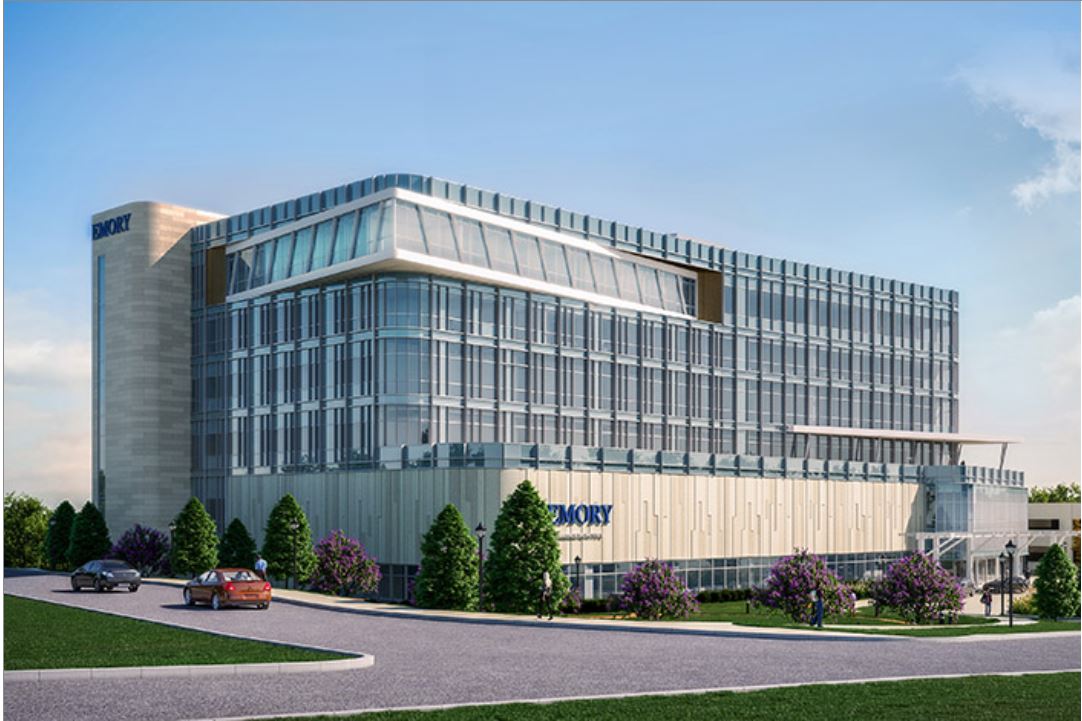The Emory system is home to a myriad of hospitals with a wide breadth of various pathologies and a diverse patient population. Each hospital and outpatient center offers a different experience to the fellow who, upon culmination of the fellowship, will have enjoyed complete access to the wide range of hand and upper extremity pathologies. To further delineate the exposure the program will offer, each hospital and outpatient center is listed with its relative subset of patients and maladies. It should be noted that Atlanta is one of the largest metropolitan areas in the U.S. with a diverse group of people representing numerous nationalities and socioeconomic roots. As a tertiary facility, Emory sees patients of all ages, races, and creeds, providing complete exposure to all types of hand and upper extremity pathologies.
Emory Upper Extremity Center at Musculoskeletal Institute
This center is part of the primary location for the orthopaedic department at Emory, located in a new 180,000-square-foot building that contains clinics, a high-efficiency ambulatory surgery center, a surgical skills laboratory, and a large translational science laboratory. Fellows’ offices will be located in the Upper Extremity Center and they will undergo the majority of their didactic education here.
Emory Orthopaedic and Spine Hospital/Emory University Hospital (EUOSH)
This hospital is a specialty hospital that sees a high volume of orthopaedic patients. It has been ranked the No. 1 hospital for orthopaedics in Georgia and performs several thousand surgeries a year. Fellows will have regular access to this hospital and will see a variety of elective and trauma procedures including inpatient shoulder, elbow, and wrist surgeries. The efficiency and specialty of this hospital gives fellows a unique perspective of a specialty hospital and will help them set future goals of appropriate quality patient care.
Grady Trauma Center
This Level 1 trauma system represents one of the busiest trauma centers in the country. This will be the primary location where fellows will take call and rotate through during two different month-long blocks during their fellowship. This hospital will give fellows access to acute traumatic injuries and provide exposure to patients of various socioeconomic status. The hand and upper extremity trauma experience available here is second to none and provides an excellent addition to the fellows’ cumulative rotations.
The Atlanta Veterans Hospital
The system and faculty also practice at the Atlanta Veterans Hospital, which takes care of more than 130,000 veterans. The hand service here is one of the only specialty hand services for the entire southeastern portion of the country. As such, the service sees patients with acute, subacute, and often chronic conditions that plague the military population. This VA also houses a minor procedure room where we practice wide-awake local anesthesia with no tourniquet (WALANT). This minor procedure room allows fellows to see and perform cases in an efficient manner.
Georgia Hand, Shoulder, and Elbow
Dr. John Seiler and his colleagues have established a large private practice referral center with one of Atlanta’s longest and richest histories. Here, fellows are exposed to a private practice model with leaders in the field of hand surgery who take care of a wide variety of hand and upper extremity pathologies. The outpatient building and hospital will allow fellows to see workers compensation cases, complex nerve transfers, and soft tissue coverage in addition to bread and butter private practice caseloads.
Children’s Hospital of Atlanta (CHOA) and Shepherd Center
Drs. Allan Peljovich and Erika Templeton have busy and complex congenital and pediatric pathologies, performing surgeries from brachial plexus reconstruction to congenital hand reconstruction. The volume and breadth of cases is significant, with the CHOA system being the largest tertiary children’s referral network in the state of Georgia and one of the largest in the nation. At the Shepherd Center, Dr. Peljovich runs a clinic that specializes in spasticity associated with cerebral palsy, spinal cord injury, and brain injuries.
It should be noted that all of these hospitals are conveniently located within driving distance of one another. Although the fellows have multiple options for living locations, please see our list of recommended neighborhood locations, as these allow fellows to be no farther than a 20-minute drive from each of the hospital and clinic locations (in fact, 5-10 minutes in most cases).





